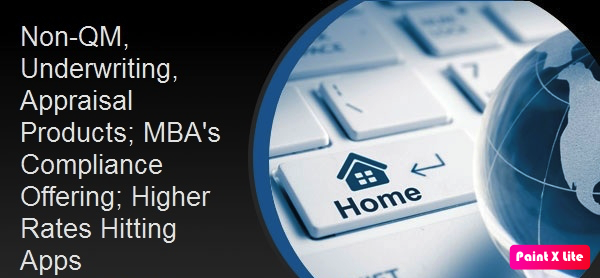Non QM underwriting refers to the process of evaluating and approving mortgage loans that do not meet the qualified mortgage (QM) guidelines set by government agencies such as Fannie Mae and Freddie Mac. These loans are designed to serve borrowers with unique financial circumstances or properties that don’t fit the traditional lending criteria. In this article, we will explore the key aspects of non QM underwriting, including its definition, benefits, and considerations. The discussion will be organized under three subheadings to provide a comprehensive understanding of the topic.
I. Defining Non-QM Underwriting
- Non-QM Loans:
- Non QM loans are mortgage loans that fall outside the parameters set by QM guidelines.
- QM guidelines were established to ensure borrower ability-to-repay and to promote responsible lending practices.
- Flexibility in Underwriting:
- Non underwriting offers more flexibility in evaluating borrower eligibility.
- It takes into account various factors beyond the traditional debt-to-income (DTI) ratio, such as bank statement history, asset depletion, or recent credit events.
- Risk Assessment:
- NonQM underwriting focuses on a holistic evaluation of borrower creditworthiness and financial stability.
- It considers factors such as credit history, employment stability, assets, and overall financial profile to assess the borrower’s ability to repay the loan.
II. Benefits of Non-QM Underwriting
- Expanded Borrower Eligibility:
- Non underwriting provides opportunities for borrowers who may not qualify for traditional QM loans.
- Borrowers with unique circumstances, such as self-employed individuals, non-U.S. citizens, or those with credit challenges, can still access mortgage financing.
- Alternative Property Types:
- NonQM underwriting allows financing for unconventional property types that may not meet QM guidelines.
- This includes properties with mixed-use, non-warrantable condos, or investment properties with higher numbers of units. // https://talentanarchy.com
- Customized Loan Solutions:
- Non QM underwriting offers more flexibility in loan terms and structures to meet borrowers’ specific needs.
- Borrowers can explore options such as interest-only loans, stated income loans, or loans with higher debt-to-income ratios.
- Portfolio Diversification for Lenders:
- Non QM loans provide an opportunity for lenders to diversify their loan portfolios and tap into underserved markets.
- It allows lenders to expand their offerings beyond traditional QM loans, potentially increasing their customer base and revenue streams.
III. Considerations in Non-QM Underwriting
- Interest Rates and Costs:
- Non QM loans often come with higher interest rates and fees compared to traditional QM loans.
- Borrowers should carefully consider the long-term cost implications of opting for non QM financing.
- Documentation and Verification:
- Non QM underwriting may require additional documentation and verification of income, assets, and other financial details.
- Borrowers should be prepared to provide comprehensive documentation to support their loan application.
- Lender Requirements:
- Each lender may have its own specific underwriting requirements and guidelines for non-QM loans.
- Borrowers should research and compare different lenders to find the one that best suits their needs and qualifications.
- Prepayment Penalties:
- Non QM loans may include prepayment penalties, which can restrict borrowers from refinancing or selling their property within a specified timeframe.
- Borrowers should carefully review the loan terms and consider the potential impact of prepayment penalties.
Conclusion
QM underwriting provides an alternative avenue for borrowers who do not meet the traditional QM guidelines to access mortgage financing. The benefits include expanded borrower eligibility, flexibility in loan terms, and opportunities for portfolio diversification for lenders. However, borrowers should consider the potential higher costs, documentation requirements, and specific lender guidelines associated with non-QM loans. By understanding the process and considering the pros and cons, borrowers can make informed decisions about whether non-QM underwriting is the right option for their unique financial circumstances and homeownership goals.






